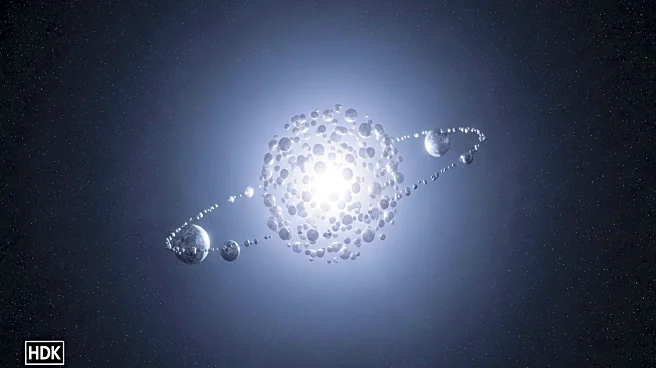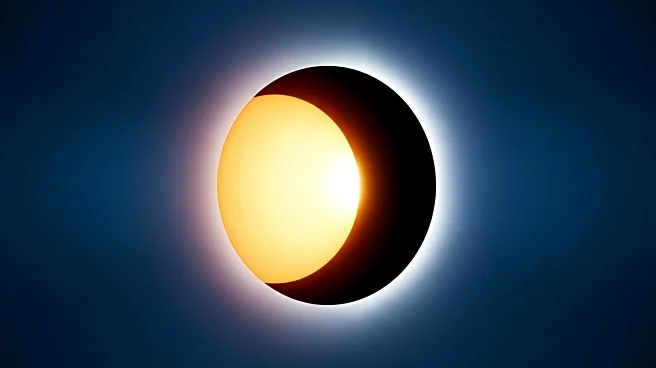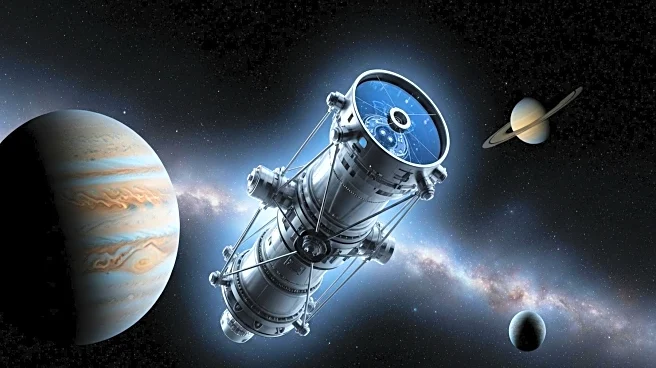What's Happening?
Astronomers have identified the building blocks of new planets, known as 'pebbles,' orbiting two young stars, DG Tau and HL Tau. These pebbles are small solid chunks that gather in protoplanetary discs, which are rings of dust and gas surrounding the stars. Over time, these pebbles can clump together to form full-sized planets. The discovery was made using the UK's e-MERLIN radio telescope network, which detects radio waves emitted by these pebbles. This network consists of seven radio telescopes connected by optical fiber, providing the resolution and sensitivity needed to study planet-building discs. The findings reveal that these discs contain large reservoirs of pebbles at distances similar to Neptune's orbit, suggesting the potential to form planetary systems larger than our own.
Why It's Important?
This discovery is significant as it provides insight into the early stages of planet formation, a process that has remained largely hidden until now. Understanding how planets form can help scientists predict the prevalence of planetary systems similar to ours in the universe. The presence of pebbles in the outer regions of these systems indicates the potential for larger and possibly different types of planets than those found in our solar system. This research is part of the PEBBLeS project, which aims to map rocky belts around young stars and explore the commonality of planet formation across the galaxy. The findings could lead to a better understanding of the conditions necessary for life-friendly planets to form.
What's Next?
The research team plans to continue their studies with the upcoming Square Kilometre Array (SKA) telescope, which is under construction in South Africa and Australia. The SKA will offer greater sensitivity and a wider observing range, allowing scientists to study hundreds of planetary systems across the galaxy. This will enhance the understanding of planet formation and the potential for life-friendly planets. The team anticipates that science verification with the SKA-Mid telescope will begin in 2031, providing new opportunities to explore planetary systems and their formation processes.
Beyond the Headlines
The discovery of pebbles around young stars not only advances scientific knowledge but also raises questions about the diversity of planetary systems and the potential for life beyond Earth. The ability to detect and study these early stages of planet formation could lead to breakthroughs in understanding the conditions that make planets habitable. As technology advances, astronomers may uncover more about the universe's capacity to support life, challenging existing theories and expanding the search for extraterrestrial life.











